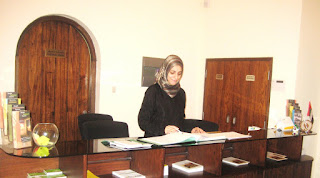
Comics play an influential role in children's lives.
Superman, Spiderman, Phantom, Mandrake the Magician, X-men, Archie, Tinkle all have one thing in common that they are popularly read with colourful, catchy imagery known as ‘Comics’.
Comics date back to the 19th century America, where comic strips began to appear in the Sunday supplements of newspapers. The first among these comic strips was Richard Felton Outcault's ‘The Yellow Kid’ which appeared in the February 16, 1896 Hearst New York American. In March 1897, these strips were compiled into Hearst's Sunday Journal and sold for 5 cents. From this humble beginning an industry was born, to evolve to what it is in our image-constructed world.
Comics play an influential role when it comes to within the educational establishment. Although, this wasn’t the case until the 1970's. Karl Koente, Author of Careful use of Comic books wrote that ‘Richard W. Campbell was among the innovative few, integrating comics into a fourth grade reading program.’ Comics are useful in the language arts, particularly in teaching dialect and characterization. In trade journals, educators Kay Haugaard (1973) and Constance Alongi (1974) recommended using comic books with reluctant readers, while Bruce Brocka (1979) enlisted comic books as a defence against a new enemy to literacy: Television.
Today, educators at all levels are designing new ways of teaching through comics. In 2002, the New York City Comic Book Museum released C.O.M.I.C.S., an eight-lesson curriculum for K-12 students teaching the reading and creation of comics. Dozens of schools across the nation ordered the curriculum before it was even complete. The National Association of Comics Art Educators evangelizes colleges and universities on the importance of comics-based courses. Their website (www.teachingcomics.org) features the syllabi of existing courses, instructional units written by cartoonists and professors, and an online community of comics educators. “Comics are a fabulous way to get kids thinking creatively.” said Mr. Johnson, a teacher at Our Own English High School.

Traditional newspaper comic strips are still a popualr read among students.
Many of today's teachers use comics to encourage the very abilities some educators in the 1940’s feared it would squelch: reading and imagination. “Not only are comics colourful, but it is funny and easy to read, indulging readers varying from ages as young as four to the sixties’ said Ms. Zahra Ahmed, a local librarian “Comic books useful in luring teenagers away from their televisions and video games.” she adds.
There are several strengths of having comics in an education curriculum. By far, the most frequently mentioned asset of comics as an educational tool is its ability to motivate students. Mrs. Sushma Menon, resident of Dubai shares that comics was the only way to motivate her son to read, "The first thing my oldest boy read because he wanted to was a comic book." She goes on to describe a similar phenomenon in her younger children. Mrs. Brinda Bhatia, a housewife residing in Sharjah also testifies to "the magnetic attraction comic books wield for children." She also found that comics' visual quality increases learning.
 Comics have evolved with todays digital era, giving rise to Web-comics.
Comics have evolved with todays digital era, giving rise to Web-comics.By inviting comics into their classrooms, educators can take advantage of the fantastic motivating power of comic books. Comics composed of pictorial and other images, is a fundamentally visual medium. This is seen to be more than a primary advantage over other literary forms. "Comics can have both words and visuals which can quite literally put a human face on a given subject resulting in an intimate, emotional connection between the reader and characters of a comic’s story.” said Ms. Neha , an avid comic reader.
United Arab Emirates got its own, first-ever comic book superhero in July 2007, with a mission to promote national identity and culture. "Ajaaj" is the brainstorm of Watani, the UAE's social development program as part of its efforts to "uphold the national identity and encourage a sense of good citizenship," said the group's general coordinator Ahmad Obaid al-Mansuri, on Al Arabiya. An ancient fictional character, "Ajaaj," which means sandstorm in Arabic, has been recast as a trim, young, Emirati man whose feats are set in the UAE in 2020.
Film and animation, in contrast to comics, are visual but time-bound. Language and actions in film and animation are fleeting. The medium, rather than the audience, dictates how quickly the viewing progresses. The text medium, on the other hand, shares comic’s “permanent” component but not its “visual” which is unique only to comics.
Comics can lead students towards the discipline of reading, especially those who don't enjoy reading or have a fear of failure. Comics can also scaffold to disciplines and concepts outside of the language arts. For example, Jay Hosler's Sandwalk Adventures, a comic book starring Charles Darwin and a talking follicle mite, introduces readers to evolutionary biology.
According to www.humblecomics.com, Comics have become a popular source of media, thereby increasing media literacy, encouraging students to “become critical consumers of media messages, having developed the ability through exposure to accurately appraise media content or quality and accuracy.”


























